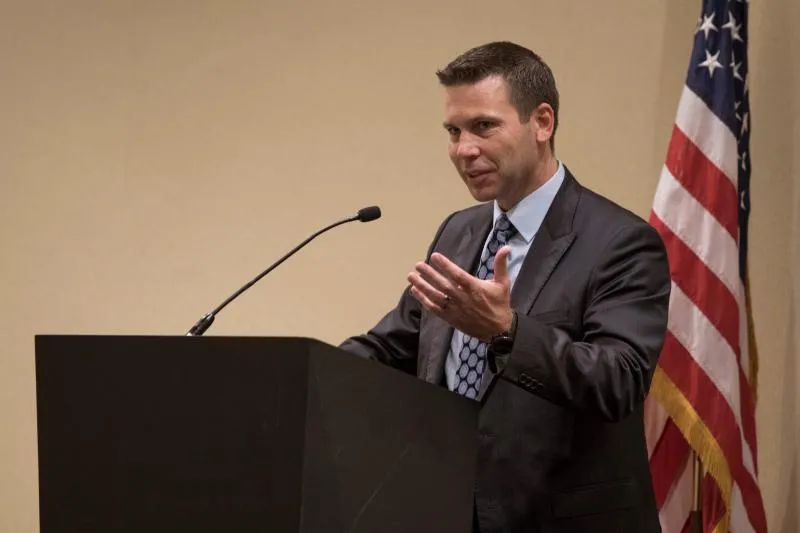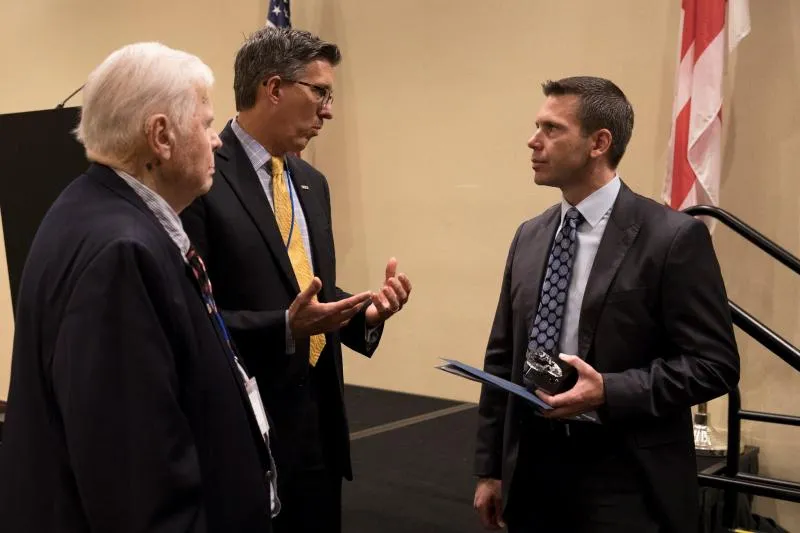CBP Commissioner Kevin McAleenan highlighted the Department of Homeland Security’s northern border strategy Monday to members of the Canadian/American Border Trade Alliance in Washington, D.C. The alliance is an association of businesses, private and public sector organizations, and individuals involved in cross-border trade, border crossing, transportation, and tourism.

addresses the Canadian/American Border
Trade Alliance. Photo by Donna Burton
Issued in June, the strategy aims to secure the northern border against threats, support trade and travel and strengthen community resilience. He cited numerous initiatives where CBP uses that strategy to meet its trade and enforcement goals.
New technology will eventually allow trucks to clear the border without stopping, increasing efficiency and safety by keeping drivers in their vehicles. “We’re now testing equipment that can provide good, clear images,” he said. “This could be a game changer.” Cross-border trade can also be improved, he continued, through shared facilities that not only saves resources, but also allows trucks to be inspected just once.
Imaging technology is also central to a pilot program to screen rail cars. Under an international agreement, Canada Border Services Agency uses U.S. imaging equipment to inspect northbound rail cars.
Cross-border transit will also benefit from CBP’s goal of electronic manifests. The change will significantly reduce wait times at ports of entry. “This is a massive step,” he said. “We expect to have electronic manifests for all trucks by next year.”
In addition to the strategy’s trade initiatives, the commissioner commended the U.S. and Canadian partnership to jointly pursue importers who evade antidumping and duty regulations, particularly steel from China.

confers with members of the
Canadian/American Border Trade
Alliance. Photo by Donna Burton
Enforcement partnerships are critical as trends, resources and priorities in international trade shift. For instance, e-commerce has resulted in “a four-fold increase in international mail. “We expect 120 million express bills by the end of this year,” he said. That’s up by 10 million from fiscal 2017, when CBP processed 110 million bills.
He also told the group that CBP is working diligently to hire more trade specialists and streamline the process. “We’ve reduced our hiring time by 50 percent and we will meet our goal this year.”
Three years ago, in another partnership, the U.S. and Canada signed the Land, Rail, Marine and Air Transport agreement. The agreement will expand preclearance locations, increase services at existing locations and create the legal framework for reciprocal procedures.
The conference happened to take place as President Trump Monday announced that Canada joined an international trade agreement with the U.S. and Mexico that will be called the United States-Mexico-Canada Agreement. The president said the accord opens markets for U.S. farmers and manufacturers, reduces trade barriers and increases global competition.

